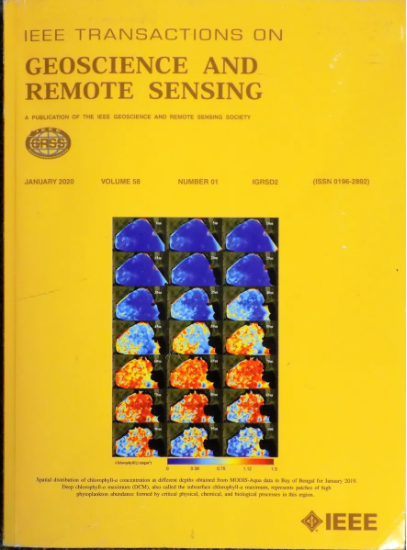Domain Adaptive Oriented Object Detection From Optical to SAR Images
IF 8.6
1区 地球科学
Q1 ENGINEERING, ELECTRICAL & ELECTRONIC
IEEE Transactions on Geoscience and Remote Sensing
Pub Date : 2024-12-11
DOI:10.1109/TGRS.2024.3515161
引用次数: 0
Abstract
Oriented object detection in synthetic aperture radar (SAR) images presents significant challenges due to the scarcity of labeled data. In contrast, acquiring labeled optical remote sensing images is considerably easier. This article proposes a domain adaptive oriented object detection (DAOOD) model, termed the pixel-instance information transfer-based model (PITM). PITM aims to transfer knowledge from optical to SAR domains, thereby reducing the dependency of oriented SAR object detection on labels. Given the pronounced domain disparity between optical and SAR images, the efficient migration of both visual content and rotating instances is incorporated to bridge the gap in their information distribution simultaneously. Specifically, regarding pixel-level information transfer, speckle noise from SAR images is mixed into the optical domain to form an intermediate domain, thus compensating for the visual difference between the two domains. For instance-level information transfer, considering the angle diversity of rotating objects, multiscale and multidirectional spatial information extraction is combined with decoupled instance-invariant features, enhancing the cross-domain discernment capacity of rotating instances. Experimental results on four DAOOD benchmarks (i.e., two optical datasets to two SAR datasets) demonstrate that the proposed PITM significantly improves oriented object detection performance, even in the absence of labeled SAR images. Specifically, it individually outperforms two source-only models by 88.16% and 54.62% in average precision (AP).面向光学到SAR图像的区域自适应目标检测
在合成孔径雷达(SAR)图像中,由于标记数据的稀缺性,定向目标检测面临着巨大的挑战。相比之下,获取标记的光学遥感图像要容易得多。本文提出了一种面向领域的自适应目标检测模型,称为基于像素-实例信息传递的模型。PITM旨在将知识从光学领域转移到SAR领域,从而减少定向SAR目标检测对标签的依赖。考虑到光学图像和SAR图像之间存在明显的区域差异,该方法结合了视觉内容和旋转实例的有效迁移,同时弥补了它们在信息分布上的差距。具体而言,在像素级信息传递方面,将SAR图像中的散斑噪声混入光域,形成中间域,从而补偿两个域之间的视觉差异。在实例级信息传递方面,考虑到旋转物体的角度多样性,将多尺度、多向空间信息提取与解耦的实例不变特征相结合,增强了旋转实例的跨域识别能力。在四个DAOOD基准(即两个光学数据集和两个SAR数据集)上的实验结果表明,即使在没有标记SAR图像的情况下,所提出的PITM也显著提高了定向目标检测性能。具体来说,它在平均精度(AP)上分别比两种纯源模型高出88.16%和54.62%。
本文章由计算机程序翻译,如有差异,请以英文原文为准。
求助全文
约1分钟内获得全文
求助全文
来源期刊

IEEE Transactions on Geoscience and Remote Sensing
工程技术-地球化学与地球物理
CiteScore
11.50
自引率
28.00%
发文量
1912
审稿时长
4.0 months
期刊介绍:
IEEE Transactions on Geoscience and Remote Sensing (TGRS) is a monthly publication that focuses on the theory, concepts, and techniques of science and engineering as applied to sensing the land, oceans, atmosphere, and space; and the processing, interpretation, and dissemination of this information.
 求助内容:
求助内容: 应助结果提醒方式:
应助结果提醒方式:


